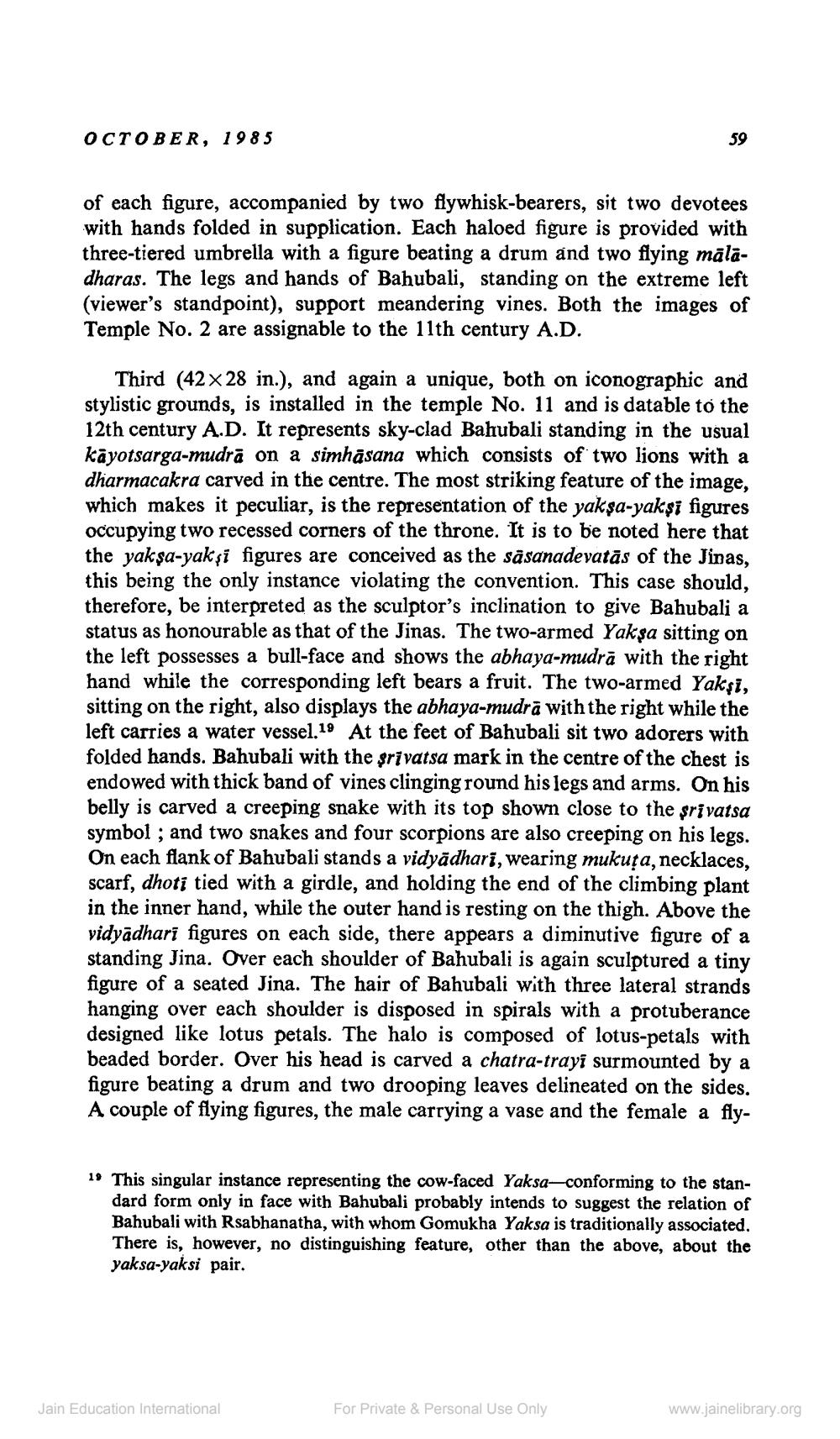________________
OCTOBER, 1985
of each figure, accompanied by two flywhisk-bearers, sit two devotees with hands folded in supplication. Each haloed figure is provided with three-tiered umbrella with a figure beating a drum and two flying mālādharas. The legs and hands of Bahubali, standing on the extreme left (viewer's standpoint), support meandering vines. Both the images of Temple No. 2 are assignable to the 11th century A.D.
59
Third (42×28 in.), and again a unique, both on iconographic and stylistic grounds, is installed in the temple No. 11 and is datable to the 12th century A.D. It represents sky-clad Bahubali standing in the usual kayotsarga-mudrā on a simhāsana which consists of two lions with a dharmacakra carved in the centre. The most striking feature of the image, which makes it peculiar, is the representation of the yakşa-yakşi figures occupying two recessed corners of the throne. It is to be noted here that the yakşa-yakşi figures are conceived as the sasanadevatās of the Jinas, this being the only instance violating the convention. This case should, therefore, be interpreted as the sculptor's inclination to give Bahubali a status as honourable as that of the Jinas. The two-armed Yaksa sitting on the left possesses a bull-face and shows the abhaya-mudra with the right hand while the corresponding left bears a fruit. The two-armed Yakşi, sitting on the right, also displays the abhaya-mudra with the right while the left carries a water vessel.19 At the feet of Bahubali sit two adorers with folded hands. Bahubali with the privatsa mark in the centre of the chest is endowed with thick band of vines clinging round his legs and arms. On his belly is carved a creeping snake with its top shown close to the privatsa symbol; and two snakes and four scorpions are also creeping on his legs. On each flank of Bahubali stands a vidyadhari, wearing mukuța, necklaces, scarf, dhoti tied with a girdle, and holding the end of the climbing plant in the inner hand, while the outer hand is resting on the thigh. Above the vidyadhari figures on each side, there appears a diminutive figure of a standing Jina. Over each shoulder of Bahubali is again sculptured a tiny figure of a seated Jina. The hair of Bahubali with three lateral strands hanging over each shoulder is disposed in spirals with a protuberance designed like lotus petals. The halo is composed of lotus-petals with beaded border. Over his head is carved a chatra-trayi surmounted by a figure beating a drum and two drooping leaves delineated on the sides. A couple of flying figures, the male carrying a vase and the female a fly
19 This singular instance representing the cow-faced Yaksa-conforming to the standard form only in face with Bahubali probably intends to suggest the relation of Bahubali with Rsabhanatha, with whom Gomukha Yaksa is traditionally associated. There is, however, no distinguishing feature, other than the above, about the yaksa-yaksi pair.
Jain Education International
For Private & Personal Use Only
www.jainelibrary.org




